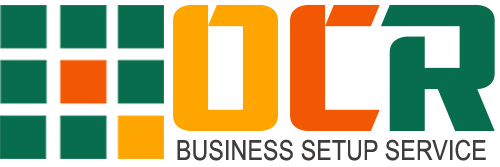Muscat: Four of Oman’s top banks made Forbes Middle East’s list of the 50 Most Valuable Banks for 2023.
The rankings, which were released by Forbes Middle East on Monday, are topped by Bank Muscat, which is ranked 22nd. Sohar International Bank is ranked 45th, followed by Bank Dhofar (46th) and the National Bank of Oman (47th).
Four Oman banks are listed among the Top 50 banks in the area, highlighting the group’s continuing progress.
The biggest bank in the area is Al Rajhi Bank of Saudi Arabia, with a market worth of $75 billion. The market capitalizations of Saudi National Bank and QNB Group of Qatar, who round out the top three, are $56.4 billion and $42.8 billion, respectively. These three businesses together account for approximately 32% of the entire list, with a valuation of $174.2 billion.
You will be interested on: Oman Corporate Banking Services
According to their reported market worth as of February 28, 2023, Forbes Middle East ranked firms using information from listed stock exchanges in the Arab world. A total of $548.1 billion is the market value of the 50 banks.
According to the research, Bank Muscat has a market value of US$5.7 billion and is listed on three stock exchanges: those in Muscat, Bahrain, and London.
With 173 branches in Oman, one in Saudi Arabia, one in Kuwait, and three representative offices in the United Arab Emirates, Singapore, and Iran, Bank Muscat was founded in 1982 and now operates in six nations.
With $33.2 billion in total assets as of 2022, the bank is the biggest in Oman. 2.4 million people use it. The bank increased its position in SICO Bahrain from 2.76 percent to 13.14 percent in October 2022 by selling its 27.29% investment in SICO Capital KSA (formerly Muscat Capital).
According to reports, the market value of Sohar International Bank was $1.19 billion, that of Bank Dhofar was $1.18 billion, and that of the National Bank of Oman was $1.1 billion.
Nine Islamic branches and 30 commercial branches make up the Sohar International Bank’s network in Oman. It created a branch in Riyadh in November 2022, and it’s anticipated that it will start operating there in 2023.
The Central Bank of Oman gave Sohar International Bank approval in February 2023 for its planned merger with HSBC Oman, which is anticipated to be completed in the second half of 2023.
Through a network of 75 locations, including 11 branches of its Islamic banking division, Maisarah Islamic Banking Services, BankDhofar offers corporate, retail, and investment banking services. By way of a private placement to investors, it completed the issue of US$300 million in additional tier 1 bonds in October 2022.
In 2022, the bank’s net earnings rose by 36% to a record $91 million. By the end of 2022, it had $11.5 billion in total assets.
In order to offer both conventional and Islamic banking services, NBO was founded in 1973. Through 66 outlets, it provides service to over 500,000 retail customers as well as 25,000 corporate and SME clients.
The bank has two branches in the United Arab Emirates. It completed the offering of additional tier 1 capital securities worth $134.1 million in November 2022.
In 2022, the bank’s entire assets were valued at $11.2 billion. With interests of 34.9% and 14.75%, respectively, the Commercial Bank of Qatar and Omani billionaire Suhail Bahwan are two of the bank’s largest owners.
Keep reading: Apply for Local Business License in Oman
According to the research, this year has been difficult for the world’s banking industry as concerns of a chain reaction arose following the failure of Silicon Valley Bank. In spite of this, it was noted that “MENA’s banks appear immune to the financial unrest to date thanks to solid liquidity buffers, low-cost and stable customer deposits, and a lack of exposure to failed U.S. banks.”
According to a Moody’s study, “GCC banks are resilient to the distress of the US banks, thanks to wide franchises and their sovereign footprint.”
The paper also discussed how quickly Islamic finance has spread throughout the GCC financial systems, noting that deposits at these institutions are less expensive than at traditional ones and help the institutions remain profitable during periods of high interest rates.
The top banks in the region, according to Forbes, come from ten different markets. GCC banks dominate the list with 41 entries, or 82% of the total.
With ten entries apiece, Saudi Arabia and the United Arab Emirates have the most banks overall, accounting for 40% of the ranking.
The combined market value of the top 10 banks in Saudi Arabia is $223.5 billion. The market value of Qatar’s eight banks is $81.3 billion, Kuwait’s seven banks are worth $76.2 billion, and Oman’s four banks are worth $9.17 billion. The UAE has ten entries, worth US$121.2 billion.

